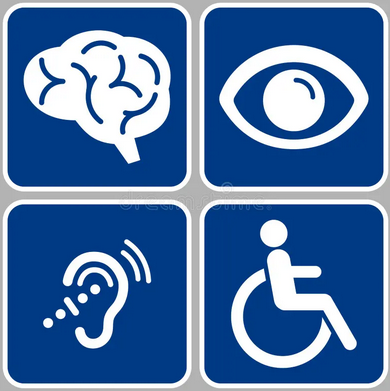Sensory and/or Physical

Sensory and/or physical needs cover six key areas: general physical needs, visual impairment, hearing impairment, fine motor skills, gross motor skills, and sensory needs. A child or young person may have needs that fall within just one area, or their needs could be across a few areas.

Sensory Needs
Visual impairment
According to Sense, the term “visual impairment” is used to describe sight loss that cannot be corrected using glasses or contact lenses. The word “blindness” is commonly used to describe total, or near-total, sight loss.
Deafness and hearing loss
The word deaf is used to describe anyone who does not hear very much. Sometimes it is used to refer to people who are severely hard of hearing too.
Those who have hearing loss will rely on communication in other forms, such as through sign language, a hearing aid, lip-reading and the use of technology.
Here are some more videos you can interact with!
How to Sign Numbers 1 to 1 BILLION in British Sign Language (BSL)
How to Sign Colours in British Sign Language (BSL)
Sign Language for Children | Colours | BSL for Kids
Physical
Physical development is split into two categories: fine motor and gross motor.
Gross motor skills
Gross motor skills involve our large muscles such as arms, legs and stomachs. We use them for all sorts of different everyday activities. Your gross motor skills are linked to other body abilities, such as:
- balance
- coordination
- body awareness
- physical strength
- reaction time
The development of these larger muscles is essential to carry out everyday tasks. Our gross motor development impacts our fine motor development from eating food and dressing, to holding a pencil.
Fine Motor skills
Fine motor skills are the ability to create movements using the hand and wrists' small muscles. We use these muscles daily for essential tasks at home and school. Some children find these tasks challenging due to a weakness in the muscles or a mis-connection between brain and muscle.

National Deaf Children Society
Look - Charity for young people with sight loss
Royal Society for Blind Children
Understood Organisation Resources
